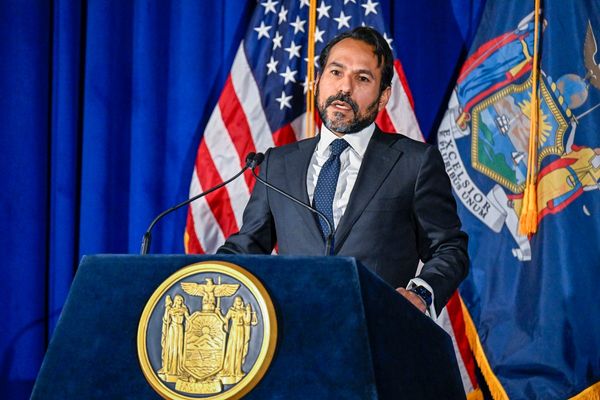Bonds are back. Stocks aren't the only game in town — and this bond fund looks to cash in.
So, say goodbye to TINA ("There Is No Alternative" to stocks). And say hello to PATTY (Pay Attention To The Yield).
That's the message from Mary Ellen Stanek and Warren Pierson, members of the portfolio team that manages Baird Intermediate Bond (BIMIX). The fund is an IBD Best Mutual Fund Award winner and has gained 3.67% this year through Dec. 4, topping 88% of its peers, according to fund-tracker Morningstar Direct. Baird Intermediate Bond has topped its benchmark in the past one-, three, five- and 10-year periods.
Bond Funds Return To Form
Bonds are back to playing the role that they have historically played in portfolios, says Pierson.
That's thanks to 11 rate hikes from the Federal Reserve to cool inflation that have pushed its key short-term rate to a 23-year high of 5.25% to 5.5% and briefly pushed the 10-year Treasury note above 5% for the first time since 2007.
"So, we're going to date PATTY next year," said Pierson. "The great thing for investors with the rise in yields is they don't have to take a ton or risk (to generate income). They don't have to go way out on the yield curve (and buy long-term bonds) or go way down in credit quality to take advantage of the opportunities in the bond market."
Thanks to 5%-plus yields for many bonds, including the Federal Reserve's key short-term borrowing rate, fixed income is once again acting as a buffer for diversified portfolios that also hold more volatile stocks. Bonds are also generating enough income now to create real competition for stocks, which historically have posted bigger returns but come with more risk.
As talk of the Fed wrapping up its rate-hike campaign heats up, and bets on when it will start to cut rates ramping up, managers of Baird Intermediate Bond shared what investors can expect next in the bond market.
Bond Funds If Fed Cuts Rates
IBD: Wall Street is placing 28% odds on the Fed cutting rates by 1.5 percentage points by the end of 2024. Thoughts?
Warren Pierson: The market may be a little ahead of itself. Markets have been looking for that pivot all year. We think the Fed is essentially done, and if the Fed isn't done, (it's) close to being done. But that's not the big thing, or the big issue.
IBD: What is?
Pierson: The big issue is that the Fed has already raised rates 500 basis points. And that's going to have an effect (on portfolios). The Fed has been doing exactly what they said they would do. And we've been saying, "Listen to the Fed for guidance." People think we can see 100, 125, maybe even 150 basis points of cuts next year, beginning as early as March. And (Fed Chairman Jerome) Powell has been saying, "Whoa, that could happen, but we're going to wait and see how it goes."
Are Rates Higher For Longer?
IBD: If rates stay higher for longer, is that good for bond investors?
Pierson: Our big point to investors is there's really good value in the bond market right now. And we don't say that because we see some precipitous decline in yields that (will result in) big capital gains. (Editor's note: Bond prices and yields move in the opposite direction, so higher prices boost the value of existing bonds, resulting in capital appreciation). It's just that yields look really attractive compared to where they've been for the last decade.
IBD: So, bond investors don't need big rate cuts to make money?
Mary Ellen Stanek: We believe that the Fed will try to keep rates higher longer to truly eradicate the rise in inflationary expectations. And that means investors will earn higher yields for longer and bonds will produce a lot of income and cushion portfolios nicely.
Baird's Market Outlook
IBD: How does the strategy for the Baird Intermediate Bond fit into your market outlook?
Stanek: Our intermediate bond fund is a really nice all-weather strategy. It invests in investment-grade U.S. government bonds, corporate debt and asset-backed and mortgage-backed bonds with maturities between one and 10 years. It gives you a nice cross section of what the intermediate part of the bond market looks like. This portfolio tracks the Bloomberg Intermediate U.S. Government/Credit Bond Index benchmark with a high degree of consistency by staying duration neutral relative to the index. We (add value) through our portfolio construction decisions. We try to set the portfolio up to beat the benchmark over time.
IBD: So, the level of yield the market and fund offers is still a good starting point for investors, right?
Stanek: We like where we're at in terms of (yields), even though they are off their highs. November was a very strong month in the bond market, where yields fell and prices rose. But there's still a lot of yield sitting in the bond market and in the portfolio.
Bond Funds Come Alive?
IBD: Bonds are no longer dead money like they were when the fed funds rate was 0%.
Pierson: Investors should take advantage of the attractive opportunities in bonds. But that doesn't mean they should go really long on duration (or invest in longer-term bonds). But we've also been cautioning investors to not get lulled into sitting on cash, or short-duration assets, because of the inversion of the yield curve, which makes those short-term bonds look attractive. At some point in time the Fed is going to pivot and they're going to lower rates. But don't let all the uncertainty stymie you from taking advantage of the opportunities that present themselves in the bond market right now.
Stanek: And intermediate bond funds are a really good place to be.
Best Bonds For Best Bond Fund
IBD: What types of bonds do you like now?
Pierson: We like corporate credit. Despite a lot of top-down players saying at the start of this year that it's going to be bad for corporate credit if we get a slowdown in the economy, we looked at it and companies are in really good shape. Yes, there's probably going to be some weakening of the economy, but corporate credit fundamentals are solid. So, you know, we stayed slightly overweight to corporates, and that was a good play. Corporate bonds have done well this year. That whole scenario of recession and corporate bond downgrades never developed.
Going Corporate?
IBD: Are you still overweight corporates?
Pierson: We still have a modest overweight to credit in our portfolio. The index weighting to credit is 36%, we're at 41.4%. So, about a 5% overweight.
There (are) certainly risks out there. But there's strong corporate credit fundamentals overall. We ask ourselves if we are being paid to take those risks. And we like the prospects for corporate credit.
We're not pounding the table. If you look at our risk posturing and our complete book of business on a scale of one to 10, and one was conservative, 10 aggressive, we're probably between a five and a six. And at the end of 2022, you know, when yields were lower and spreads were a little tighter, we were probably somewhere between a three and a four.
IBD: What else do you like?
Stanek: We've (bulked up) the securitized part of the portfolio (despite our benchmark having zero allocation). Think residential mortgage-backed securities, asset-backed securities. They're very high quality — AAA-rated. Those subcategories together all roll up to a little more than 13% of the portfolio, and we find some good value there. Corporate credit and securitized debt provide the portfolio with some additional yield.
We have just under 45% of the portfolio in Treasuries. We're still seeing decent value there.
Bonds For All Seasons
IBD: What's the benefit of holding an all-weather bond portfolio, especially now?
Stanek: 2023 is a good example. How do you forecast all that has happened and all the twists and turns in interest rates? It's easy to get whipsawed if you're trying to outguess the short-term direction of rates. We'd rather stay duration neutral to the portfolio benchmark. And spend our time and attention on the things we believe we've got a much higher probability of providing additional value on, like individual security selection, how we overweight or underweight sectors, and how we position along the yield curve.
Intermediate Vs. Long Term?
IBD: Why is owning intermediate bonds a good way to go now rather than betting on short- or long-term bonds?
Pierson: Because you have a lot less volatility. The interest-rate sensitivity of a bond or a fund can be measured by its duration. (The longer a bond's maturity date, the more rate sensitivity it has.)
The duration of Baird Intermediate Bond is a little less than four years. Our Aggregate Bond fund has a duration of about six years. So, 50% more. The short-term fund is about two years. Right now, I would probably steer investors to the intermediate bond fund (which takes on less interest-rate risk than a longer-term bond and a little more than a short-term bond fund).
IBD: Is there a big difference in returns of bond funds with different durations in the event of, say, a 1% drop in yields?
Stanek: The rough math goes like this: Consider a bond fund with a duration just under two years. If you get a 100-basis-point fall in rates, you basically get a 2% rise in principal value. If rates rise, you get the converse happening. If rates go up 100 basis points, the value falls roughly 2%. An intermediate bond fund with a four-year duration, you'll get a (price change) of plus or minus 4%. And for an aggregate bond fund with a six-year duration, (your price return) is plus or minus 6%. This example gives you a sense of how much additional principal volatility you can have (depending on a bond fund's duration).
Shooting For Higher Yields
IBD: Don't bond investors have a good head start to performance given high yield levels?
Pierson: Given where rates are now, investors have so much more cushion than they did at the end of 2021, before interest rates started to rise. The yield on Baird Intermediate Bond at the end of November was roughly 5.25%. Well, at the end of 2021 it was 1.5%. So, even if you had a 100-basis-point rise in yields from here, and we're not necessarily looking for that, an intermediate bond fund would suffer a price fall of 4%. But you're starting with a 5.25% yield, so you're still going to have a positive return. At the end of 2021, in contrast, you were starting with a 1.5% yield. So, if you lost 4%, you've got a negative return, and that's what happened in 2022 when rates rose sharply.
Starting Out With Bonds
IBD: Is the starting point of yields now what investors should be focusing on?
Stanek: Yes. If you look over time, most of your return on a bond or bond portfolio comes from income. So it's a good cushion, is the word we use. It really helps portfolios handle volatility. There will be days when prices are on the downside. But you'll still have a lot of yield that is literally cranking through every day in the portfolio.
IBD: Do bonds provide an alternative to stocks and other assets?
Pierson: Yes, especially given that real yields are positive (given that yields are now higher than the rate of inflation). From an investor standpoint, you now get protection against rising rates, but also against inflation. And the big secular decline in interest rates we saw from the early 80s into the 2000s, and then rates staying at artificially low levels for about a decade, was a real tailwind for other sectors like real estate and stocks, which did really well.
But now rates have risen. We're not saying that investors can't make money in the stock market or real estate, but there's a real headwind against those sectors. So, when you put up the opportunities and the yields that the fixed-income markets offer, relative to other asset classes, we think that's pretty attractive.
Bond Funds Meet Recession
IBD: Is a recession bullish for the bond market?
Pierson: It's probably bullish. It would mean the Fed probably is going to ease and you're going to see interest rates come down. But I don't think there's necessarily a real consensus on which way interest rates are going. There's a question: Will the Fed be successful in getting inflation back to 2%? Or is it going to stop at 3%? Is that about as good as they can go?
But we're not market timers. We don't try to add value by guessing on the direction of interest rates. It's just really hard to do in the short run. Just because a lot of people are kind of thinking, "The Fed's done tightening, so interest rates across the curve have to fall," that's not necessarily the case.
IBD: What's the play for bond investors willing to take more risk to get bigger returns?
Stanek: If you want to be a bit more aggressive, then I would say lean towards longer-duration bonds and funds. I don't know that you want to get terribly aggressive and go way down in credit quality versus investment grade. The great thing for investors with the rise in yields is they don't have to take a ton of risks to take advantage of the opportunities there are in the bond market.







